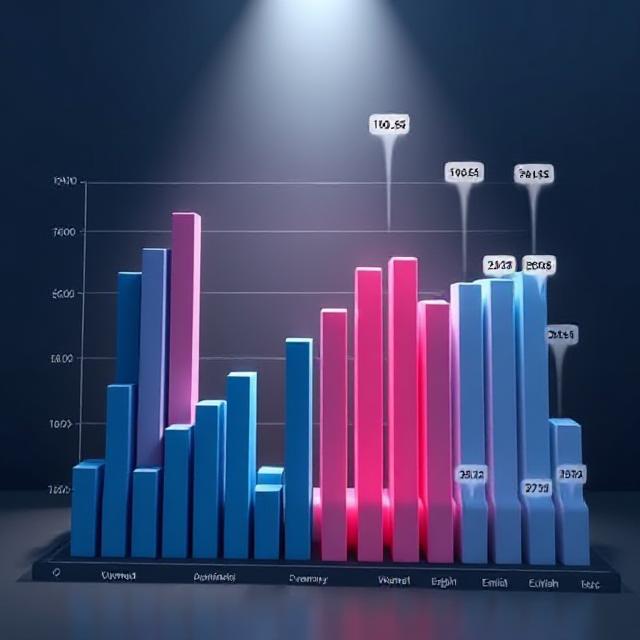Your cart is currently empty!
Simpson’s Paradox: How Statistics Deceive

Table of Contents
Simpson’s Paradox: How Statistics Deceive and Mislead
Simpson’s Paradox is a statistical phenomenon where a trend that appears in several different groups of data disappears or reverses when the groups are combined. This paradox is not just a mathematical curiosity—it has real-world implications in medicine, social science, public policy, sports, and business.
So how can data tell us one thing in isolation and the opposite when viewed as a whole? In this article, we’ll explore what Simpson’s Paradox is, why it happens, and how to think critically about statistics to avoid being misled.
I. What Is Simpson’s Paradox?
Simpson’s Paradox arises when the relationship between two variables changes direction when a third variable (a “lurking variable”) is introduced or when the data are aggregated.
Example:
A drug appears to be more effective for men and also more effective for women. Yet, when you combine all the data, it looks like the drug is less effective overall.
This reversal of trends is counterintuitive and dangerous if not understood. It challenges our assumptions about causality and demands greater attention to data structure and context.
II. Famous Example: UC Berkeley Admissions
One of the most cited real-world cases of Simpson’s Paradox occurred in 1973 at the University of California, Berkeley.
Problem: Women were being admitted at a lower overall rate than men, suggesting discrimination.
Data:
- Overall, 44% of men were admitted versus 35% of women.
- However, when broken down by department, most departments actually admitted more women than men.
Why? Women applied in larger numbers to competitive departments with low acceptance rates (like English), while men applied more to departments with higher acceptance rates (like Engineering).
Conclusion: The aggregated data suggested discrimination, but departmental breakdowns showed no bias. This is Simpson’s Paradox in action.
III. How the Paradox Works: A Step-by-Step Breakdown
Let’s explore a simplified example with numbers:
Imagine Two Hospitals:
- Hospital A:
- Surgery Success Rate: 90% for men, 80% for women.
- 90 men and 10 women treated.
- Hospital B:
- Surgery Success Rate: 70% for men, 60% for women.
- 10 men and 90 women treated.
Now compute the overall success rates:
- Men: (90 * 0.9 + 10 * 0.7) / 100 = 88%
- Women: (10 * 0.8 + 90 * 0.6) / 100 = 62%
Even though in each hospital, women do worse than men, when totals are computed, the gap reverses dramatically.
This paradox results from weighted averages and the influence of subgroup sizes.
IV. Mathematical Foundations
Simpson’s Paradox is rooted in conditional probability and marginal probability.
Let:
- A = treatment group
- B = success rate
- C = third variable (e.g., hospital or department)
Simpson’s Paradox shows that:
- P(B | A) can reverse direction when conditioned on C:
- P(B | A) ≠ weighted average of P(B | A, C)
It reminds us that statistical relationships aren’t always transitive across aggregations.
V. Real-World Implications
A. Public Health
Vaccines may appear less effective when aggregated across age groups. Younger people may get sick less often, skewing data.
B. Economics
Income inequality measures can reverse depending on how data are grouped by region, age, or education.
C. Sports
A batter may have a higher batting average against both left- and right-handed pitchers in separate seasons, yet have a lower overall average when seasons are combined.
D. Business & Marketing
Customer satisfaction metrics may vary across product lines but mislead when aggregated across all products.
VI. Avoiding the Trap: How to Think Critically
- Disaggregate the Data
- Always break down totals by relevant subgroups.
- Ask About Lurking Variables
- Consider what confounding factors might be influencing outcomes.
- Use Causal Inference Techniques
- Consider methods like regression, path analysis, or structural equation modeling.
- Visualize Your Data
- Scatter plots, mosaic plots, and decision trees help reveal hidden patterns.
- Be Wary of Averages
- Especially when subgroups differ significantly in size.
VII. Philosophical Reflection: What Truth Does the Paradox Reveal?
Simpson’s Paradox forces us to confront uncomfortable realities:
- Truth is context-dependent.
- Statistics without structure are often deceptive.
- Aggregation hides causality.
It teaches us epistemic humility: data doesn’t speak unless spoken to carefully.
In many ways, it echoes broader philosophical themes:
- Relativism: Truth depends on perspective.
- Constructivism: Knowledge is structured by how we frame the question.
- Critical Rationalism: Challenge conclusions, even those from data.
VIII. The Paradox in the Age of Big Data
In our era of data-driven decisions, Simpson’s Paradox is more relevant than ever:
- Algorithms can misclassify trends.
- Misinterpreted data can lead to bad public policy or unfair hiring.
- Machine learning systems must be trained with context-aware data pipelines.
Ethics and responsibility in data science now require statistical literacy.
IX. Conclusion: Numbers Lie Without Context
Simpson’s Paradox reminds us that even precise data can lead to false conclusions. The solution is not distrust of data, but disciplined interpretation.
The next time someone throws a statistic at you, ask:
- What subgroups were used?
- What variables are missing?
- Are we seeing causation or just correlation?
Because sometimes, the truth is not in the numbers—but in how we think about them.
